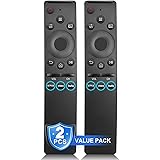If you are ready to upgrade your home theater experience and enjoy high-definition visuals in the comfort of your living room, it is time to install a home theater video wall. In the last two decades, state-of-the-art cinematic technology has been the domain of trips to the theater. Now, you can enjoy state-of-the-art visuals right in the comfort of your living room. The Samsung Wall for Luxury is a versatile microLED display that makes a bold statement.
LED screens used for a video wall typically have a narrow bezel to minimize the space between active display areas. The screens are designed to last for years and are often backed by hardware that enables them to be stacked. A video wall’s controller can control the brightness of individual screens and can daisy chain power and video among multiple screens. Some video walls also incorporate a remote control or voice-activated capabilities to adjust brightness levels of individual displays.
The owner of this 17-foot basement was a longtime client of RevampIT Audio Video in Scottsdale, Arizona. The homeowner had an idea for a home theater, but the space was too small. The room’s ceiling was only twelve feet, and the owner had no desire to install a two-piece projection system. But the company was up to the task, and installed a multi-screen video wall. And the homeowner is thrilled with the results!
When installing a home theater video wall, the first thing to consider is the size of the room. Some of them are modular, allowing for various sizes and aspect ratios. Larger video walls cost more than smaller ones because they require larger processing power and driving controllers. So make sure to choose a large space for your video wall so that you can enjoy a full range of movies and shows. Then, you can add or subtract screens, if you want.
A home theater video wall can be made up of several cubes. Each cube holds a screen and projector. A mirror in the cube reflects the image onto the projection screen. The video wall can be serviced from the front or the rear. The main advantages of a rear-projection video wall are its long life and the absence of burn-in effects. And it is easy to install, and it looks amazing in your home theater.
While the quality of LED home theater video walls is unmatched, some manufacturers cut corners by using less expensive LEDs. LED video walls can be less expensive, but don’t get them unless you are sure they have enough shielding. The result can be an unpleasant surprise if your wireless networking equipment or electronics get in the way. A quality home theater video wall is worth its weight in gold. Then, you can finally watch your favorite movies and TV shows in your own home theater.









